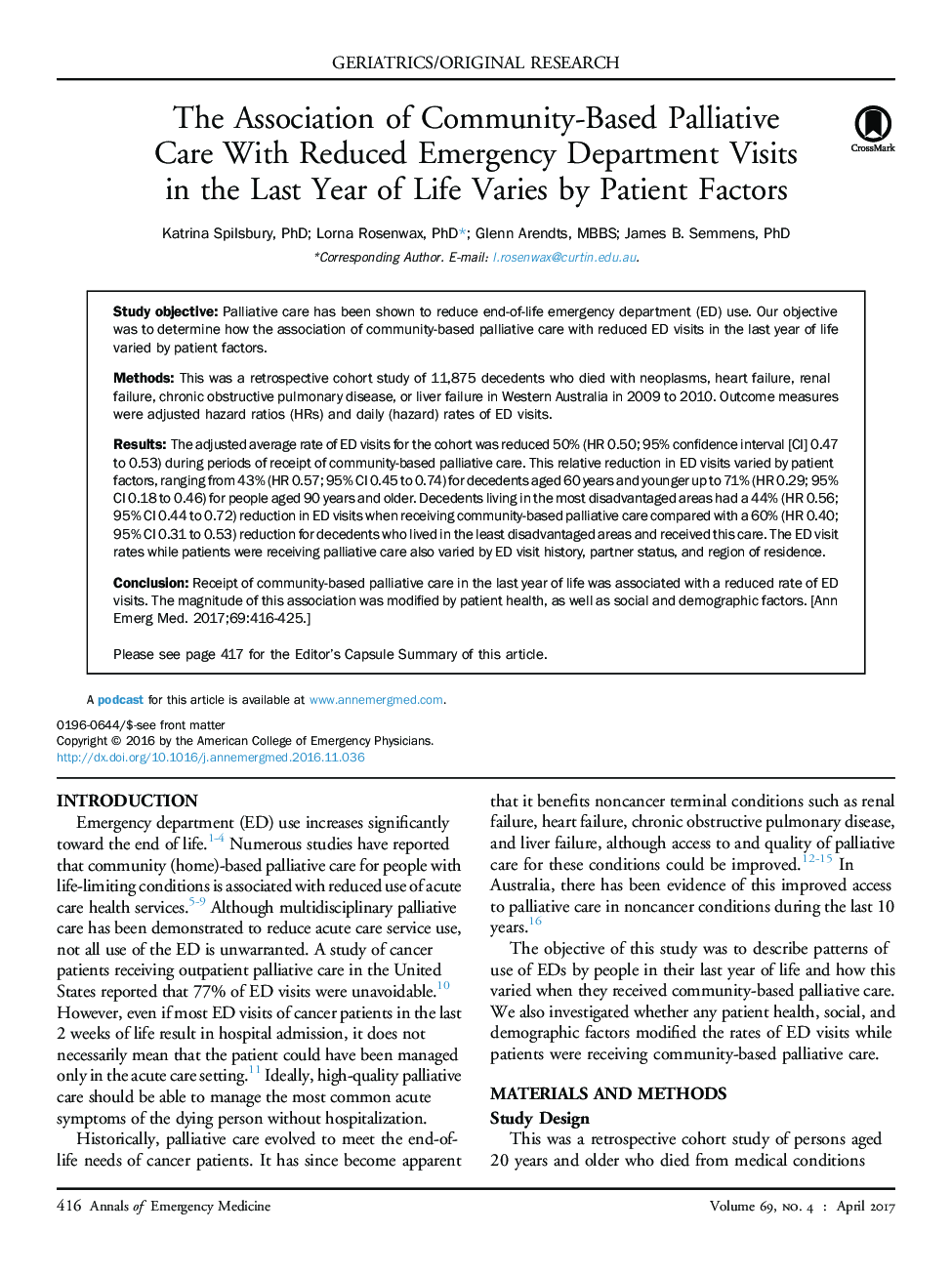| Article ID | Journal | Published Year | Pages | File Type |
|---|---|---|---|---|
| 5651675 | Annals of Emergency Medicine | 2017 | 10 Pages |
Study objectivePalliative care has been shown to reduce end-of-life emergency department (ED) use. Our objective was to determine how the association of community-based palliative care with reduced ED visits in the last year of life varied by patient factors.MethodsThis was a retrospective cohort study of 11,875 decedents who died with neoplasms, heart failure, renal failure, chronic obstructive pulmonary disease, or liver failure in Western Australia in 2009 to 2010. Outcome measures were adjusted hazard ratios (HRs) and daily (hazard) rates of ED visits.ResultsThe adjusted average rate of ED visits for the cohort was reduced 50% (HR 0.50; 95% confidence interval [CI] 0.47 to 0.53) during periods of receipt of community-based palliative care. This relative reduction in ED visits varied by patient factors, ranging from 43% (HR 0.57; 95% CI 0.45 to 0.74) for decedents aged 60 years and younger up to 71% (HR 0.29; 95% CI 0.18 to 0.46) for people aged 90 years and older. Decedents living in the most disadvantaged areas had a 44% (HR 0.56; 95% CI 0.44 to 0.72) reduction in ED visits when receiving community-based palliative care compared with a 60% (HR 0.40; 95% CI 0.31 to 0.53) reduction for decedents who lived in the least disadvantaged areas and received this care. The ED visit rates while patients were receiving palliative care also varied by ED visit history, partner status, and region of residence.ConclusionReceipt of community-based palliative care in the last year of life was associated with a reduced rate of ED visits. The magnitude of this association was modified by patient health, as well as social and demographic factors.
